2011 EWB Challenge Design Brief - Engineers Without Borders UK
2011 EWB Challenge Design Brief - Engineers Without Borders UK
2011 EWB Challenge Design Brief - Engineers Without Borders UK
You also want an ePaper? Increase the reach of your titles
YUMPU automatically turns print PDFs into web optimized ePapers that Google loves.
Part 1 – <strong>EWB</strong> <strong>Challenge</strong><br />
Letters of Introduction<br />
Dear Students,<br />
Vanakkam and welcome to India! The <strong>2011</strong> <strong>Engineers</strong> without <strong>Borders</strong> <strong>Challenge</strong> provides an exciting opportunity to focus on improving infrastructure, livelihoods and development in a village called Devikulam in<br />
southern India.<br />
Devikulam is a small village located in one of the most underdeveloped districts in the state of Tamil Nadu. The village consists of approximately 89 households, almost all of whom live below the poverty line, half of the<br />
population in Devikulam also belong to the Scheduled (Dalit) Caste. While most households in Devikulam have an electricity connection, houses in the area referred to as the ‘colony’ are generally in very poor condition<br />
and there is limited access to safe drinking water.<br />
Household income in Devikulam is generally obtained through irregular agricultural work on farms in the surrounding areas. The nearby large centres of Pondicherry and Chennai can be a magnet for migration as<br />
villagers move in search of employment; however, with nearly 60 percent of the district population having attained only primary level education or less, the employment choices are limited.<br />
Pitchandikulam Forest is a community founded as part of the international township of Auroville, physically located in Pitchandikulam Forest, which the organisation planted and developed over the last 40 years.<br />
Pitchandikulam is located 30 km from Devikulam in an area of 60 acres that has been restored from barren over-used farmland into a tropical dry evergreen forest with a wide diversity of flora and fauna and a seedling<br />
nursery. Apart from the office, there is also an education centre. It has a strong focus on restoration and eco-friendly technology and the staff are involved in training village communities in the process of eco-restoration<br />
as well as in the use of medicinal plants, with links to and support from traditional healers.<br />
For over 12 years now Pitchandikulam Forest has been working in Devikulam and the surrounding villages of the Nadukuppam panchayat (administrative unit of a region). Initially programs focussed on providing the<br />
community with knowledge on sustainable land use planning and eco-friendly practices, however in later years, work has expanded to include environmental education, women’s empowerment, alternative income<br />
and health programs. Some of our current initiatives include:<br />
• environmental education and awareness programs for school children and other community members;<br />
• community asset building projects, health and adult literacy programs;<br />
• micro-finance schemes in the village with women’s self help groups (currently consisting of approximately 420 members);<br />
• training programs for community members in sustainable livelihood practices to secure jobs and/or launch local enterprises;<br />
• a traditional health care system is also facilitated through 3 rural dispensaries and herbal medical health camps that have resulted in a revival of this knowledge and affordable health care for the villagers.<br />
In 2010, Pitchandikulam Forest also began an Innovation’s Project in Devikulam. The project has aimed to address some of the current local demands through the introduction of sustainable technologies in the areas of<br />
construction, water supply and treatment, and alternative energy. The Innovation’s Project has also sought to offer a variety of training programs to develop skills and ensure environmental values are firmly established<br />
among the local population. This project has provided an opportunity to showcase a range of alternative technologies suitable for implementation in villages, as a model for the government and other agencies.<br />
Pitchandikulam Forest feels that the <strong>EWB</strong> <strong>Challenge</strong> is an excellent opportunity to explore many more original and innovative ideas for implementation at the village level in rural India. We are thrilled to be involved<br />
with the <strong>EWB</strong> <strong>Challenge</strong> for <strong>2011</strong> and look forward to sharing the cultural values, stories, knowledge and experiences of those living in Devikulam. We are excited about this opportunity to hear your ideas and use them<br />
to deliver improved livelihoods for the people of the region.<br />
We welcome you to Devikulam and look forward to working you over the coming months through the <strong>2011</strong> <strong>EWB</strong> <strong>Challenge</strong>.<br />
Enjoy the challenge!<br />
Joss Brooks<br />
Director<br />
23
<strong>EWB</strong> <strong>Challenge</strong> <strong>2011</strong><br />
Dear Students,<br />
I’m thrilled that so many first year engineering students will be actively involved in working with Pitchandikulam Forest for their first-year design projects. I<br />
visited the area for the first time in late 2009 and was amazed at the incredible and diverse work that Pitchandikulam Forest are doing and the innovations<br />
they have shown in their approach.<br />
Pitchandikulam Forest has created a true eco-oasis in Auroville not far from the crowds and pollution of Chennai, and in fact one of their major projects they<br />
have at the moment is rehabilitating and greening a polluted waterway. It is a showcase for what can be done and how the environment can be enjoyed!<br />
The need is certainly great in the area, but the outlook is positive with a motivated community, a fantastic community partner in Pitchandikulam Forest and the<br />
prospect of some wonderful designs from first year students such as yourselves. The <strong>Challenge</strong> is asking you to come up with innovations for the rural habitat<br />
project in the Devikulam village to complement existing sustainable development projects. In coming up with designs, the most important thing is to put<br />
yourself in the shoes of the community throughout the design process, be creative and have fun!<br />
The <strong>EWB</strong> <strong>Challenge</strong> is a fantastic opportunity for you to learn, understand and participate in a wonderfully rich culture and be involved in an exciting time of<br />
change for the less privileged living in Devikulam. It is an opportunity to learn not just about the challenges facing their community, but the global rural poor.<br />
Access to things we take for granted like water, sanitation, energy, education and health care is extremely difficult for many of the world’s poor. As engineers<br />
and global citizens, we can facilitate access to these basic human rights with the will to make a difference and an appropriate approach.<br />
I am really looking forward to sharing your ideas with Pitchandikulam Forest, but also sharing your journey as students and engineers with our Community<br />
Partners in India.<br />
Yours sincerely,<br />
Ian Cunningham<br />
South Asia Programs Coordinator<br />
<strong>Engineers</strong> <strong>Without</strong> <strong>Borders</strong><br />
3
Table Of Contents<br />
1 Introduction to the <strong>EWB</strong> <strong>Challenge</strong>..............................................................................................................5<br />
2 Project Topics ......................................................................................................................................................6<br />
2.1 <strong>Design</strong> Area 1 – Devikulam Industry Development Plan......................................................................7<br />
2.2 <strong>Design</strong> Area 2 - Building Construction........................................................................................................8<br />
2.3 <strong>Design</strong> Areas 3- Transportation.....................................................................................................................9<br />
2.4 <strong>Design</strong> Areas 4- Water Supply and Sanitation Systems........................................................................10<br />
2.5 <strong>Design</strong> Areas 5- Energy.....................................................................................................................................11<br />
2.6 <strong>Design</strong> Areas 6- Information, Communication and Technology (ICT)<br />
for Educational Activities.................................................................................................................................12<br />
2.7 <strong>Design</strong> Areas 7- Waste Management .........................................................................................................13<br />
2.8 <strong>Design</strong> Areas 8 - Housing.................................................................................................................................14<br />
3 Key <strong>Design</strong> Considerations..............................................................................................................................15<br />
4 Submissions Requirements & Program Rules...........................................................................................15<br />
4.1 Reporting requirements...................................................................................................................................15<br />
4.2 <strong>EWB</strong> <strong>Challenge</strong> Rules.........................................................................................................................................16<br />
5 Program Overview..............................................................................................................................................18<br />
5.1 Developing Engineering Graduate Attributes..........................................................................................18<br />
5.2 Supporting <strong>EWB</strong>’s Work with Communities...............................................................................................18<br />
6 Working With <strong>Engineers</strong> <strong>Without</strong> <strong>Borders</strong>..................................................................................................19<br />
6.1 Introduction to <strong>EWB</strong> .......................................................................................................................................19<br />
6.2 <strong>EWB</strong>’s work with disadvantaged communities.........................................................................................19<br />
6.3 <strong>EWB</strong>’s past work around the world...............................................................................................................20<br />
6.4 Past Projects in India..........................................................................................................................................21<br />
7 Development Agenda in India.......................................................................................................................22<br />
7.1 India at a glance...................................................................................................................................................22<br />
7.2 Development Priorities.....................................................................................................................................22<br />
8 Pitchandikulam Forest.......................................................................................................................................24<br />
9 Devikulam Community and the Region.....................................................................................................25<br />
9.1 Women’s Self Help Group................................................................................................................................25<br />
9.2 Health Camps .....................................................................................................................................................26<br />
9.3 4.4.3 Famers Association..................................................................................................................................26<br />
4.5 Devikulam Development.................................................................................................................................27<br />
4.6 Student Proposals...............................................................................................................................................27<br />
4.7 Student Learning Outcomes...........................................................................................................................28<br />
10 Supporting Resources .......................................................................................................................................29<br />
11 Previous <strong>Challenge</strong>s...........................................................................................................................................29<br />
11.1 Beyond the 2008 <strong>EWB</strong> <strong>Challenge</strong>..................................................................................................................29<br />
11.2 Beyond the 2009 <strong>EWB</strong> <strong>Challenge</strong>..................................................................................................................30<br />
11.3 Beyond the 2010 <strong>EWB</strong> <strong>Challenge</strong>..................................................................................................................31
Introduction to the <strong>EWB</strong> <strong>Challenge</strong><br />
The <strong>EWB</strong> <strong>Challenge</strong> is a design program for first-year University students coordinated by <strong>Engineers</strong> without <strong>Borders</strong> Australia (<strong>EWB</strong>) and delivered in<br />
partnership with Australasian universities. It provides students with the opportunity to learn about design, teamwork and communication through<br />
real and inspiring sustainable development projects.<br />
Each year, the <strong>EWB</strong> <strong>Challenge</strong> design brief is based on a new set of sustainable development projects identified by <strong>EWB</strong> with its community-based<br />
partner organisations. The inaugural <strong>EWB</strong> <strong>Challenge</strong> ran in 2007 with students developing project ideas and concepts to support the expansion of<br />
the Uluru Children’s Home in India. In 2008 and 2009 students created innovative project solutions to support the development of communities in<br />
Cambodia - for citizens in Kandal Province, as well as those living on and around the Tonle Sap Lake. Last year, students supported remote Aboriginal<br />
communities living in South-Western Queensland.<br />
In <strong>2011</strong>, students will be looking at the problems faced in the remote community of Devikulam in the Pitchandikulam region of India. Teams of four<br />
to six students are invited to collaborate on engineering and design projects that address project ideas identified by the Pitchandikulam Forest<br />
organsiation. Students’ designs and ideas make a direct contribution towards <strong>EWB</strong>’s work with the Devikulam community.<br />
The <strong>EWB</strong> <strong>Challenge</strong> is open to students undertaking a first-year university 1 course registered with the <strong>EWB</strong> <strong>Challenge</strong>. The course may run in Semester<br />
One or Semester Two. Students studying in the disciplines of engineering, architecture, urban planning, landscape architecture, science, business and<br />
social science are encouraged to participate.<br />
Each university may nominate up to four team submissions for external judging. The <strong>2011</strong> <strong>EWB</strong> <strong>Challenge</strong> submission process closes on 22 July <strong>2011</strong><br />
(Semester One courses) and 21 October <strong>2011</strong> (Semester Two courses).<br />
<strong>EWB</strong> will host a regional judging final, inviting the top four to six teams to present their work and be assessed by a multidisciplinary panel of judges.<br />
The finalists will be announced by the 28th of October with regional judging occurring between the 5th and 13th of November (depending on the<br />
regional area). The top team in each region will be invited to present their work at the annual AAEE Conference at the beginning of<br />
December. Awardees will be announced at a special awards ceremony following the presentations.<br />
1<br />
International universities may participate in the <strong>EWB</strong> <strong>Challenge</strong>. However team travel expenses to the awards ceremony are not be covered by the program.<br />
5
Project Topics<br />
In <strong>2011</strong> <strong>EWB</strong> and Pitchandikulam Forest have worked together to identify a<br />
range of relevant student projects. Students are invited to develop innovative<br />
and appropriate project solutions that can make a real contribution towards<br />
the sustainable development of Devikulam.<br />
This year’s challenge has been separated into eight design areas including<br />
industry development, building and construction, transportation, water<br />
supply and sanitation, energy, information, communication and technology<br />
(ICT) for educational activities, waste management, and housing. <strong>Design</strong><br />
teams may wish to address a single issue or provide an integrated design<br />
solution for two or more issues. Alternative projects may also be considered.<br />
The <strong>EWB</strong> <strong>Challenge</strong> is an open-ended learning experience and the breadth<br />
and depth of design is left to individual universities and design teams to<br />
scope, within the context of the submission requirements (see Section 4).<br />
The following information has been provided to assist in the development<br />
of concept designs for various projects such as physical infrastructure and<br />
appropriate technologies. These designs, coupled with knowledge and<br />
skills sharing, aim to support Pitchandikulam Forest to address the social,<br />
environmental and economic issues facing people in the region. Contextual<br />
information on each design area can be found on the <strong>EWB</strong> website or by<br />
following the link given under “further information”.<br />
67
2.1 <strong>Design</strong> Area 1 – Devikulam Industry Development Plan<br />
This design area would develop the skills and knowledge of design groups in the area of fundamental concepts of development, including the<br />
issues surrounding knowledge and technology transfer, community management, wealth creation and small-scale development.<br />
Project Statement<br />
The people of Pitchandikulam Forest seek to improve the employment prospects of the people in the region. To do this, they are seeking to develop<br />
a thriving community which has new industry and purpose. Your challenge is to identify potential issues around implementing opportunities for the<br />
community, and put forward a viable proposal to take to the community.<br />
Considerations<br />
When designing a solution, the following issues have been identified and should be considered as a priority. The proposal should:<br />
• Create a source of revenue for the community.<br />
• Have low start-up and maintenance cost.<br />
• Build upon skills that people in the community already have.<br />
• Create stable local employment for a wide range of people in the community.<br />
• Improve the annual income per capita of the community.<br />
• Be eco-friendly by avoiding contamination of the local environment, or unfairly drawing upon community resources.<br />
Suggested Projects<br />
Pitchandikulam Forest has been working with the central government looking at enterprise development<br />
opportunities within communities, run mainly through self-help groups. <strong>EWB</strong> and Pitchandikulam Forest<br />
invite you to either consider one or more of the following new industry proposals, or scope a new project:<br />
• Quilting<br />
• Spirulina project<br />
• Small step bags<br />
• Medicinal plants<br />
Further Information<br />
http://www.ewb.org.au /devikulamindustrydevelopmentplan<br />
7
<strong>Design</strong> Area 2 - Building Construction<br />
This design area would develop the skills and knowledge of design groups in the area of building design. This would involve either the design<br />
of new buildings or the renovation of existing ones. Issues such as climate and culture need to be considered in any proposals.<br />
Project Statement<br />
Pitchandikulam Forest wishes to provide better facilities for the people living at Devikulam, through construction and renovation projects. These<br />
projects aim to increase the morale, quality of life, and cohesion within the community. Your challenge will be to provide eco-friendly design proposals<br />
that would help to achieve these aims.<br />
Considerations<br />
When designing a solution, the following issues have been identified and should be considered a priority. The proposal should:<br />
• Explain measures taken that would help to reduce cost, construction time, and negative environmental impacts.<br />
• Consider factors such as heating and cooling, lighting and the material selection.<br />
• Use locally available materials as much as possible.<br />
Suggested Projects<br />
<strong>EWB</strong> and Pitchandikulam Forest invite you to consider one or more of the following design<br />
projects:<br />
• Creation of design changes to existing buildings.<br />
• <strong>Design</strong> of a community hall.<br />
• <strong>Design</strong> of a primary health care centre.<br />
• Renovate the village temples.<br />
• <strong>Design</strong> of new village temples.<br />
Further Information<br />
http://www.ewb.org.au/buildingconstruction<br />
89
2.3 <strong>Design</strong> Areas 3- Transportation<br />
This design area would develop the skills and knowledge of design groups in the area of transport systems planning. Some of the<br />
issues that need to be looked at include traffic management, infrastructure, maintenance, feasibility, and funding. The scope of<br />
these projects could be extended to include the entire Panchayat region.<br />
Project Statement<br />
Pitchandikulam Forest has identified the transport system in Devikulam and the entire Panchayat region as a problem that needs to be addressed.<br />
One of their aims is to improve the community’s transport infrastructure to make it easier for the people living in the area to move in between villages<br />
and to the capital city Pondicherry. Another aim is to make it easier for the citizens of the Devikulam community to commute, especially for those who<br />
regularly need to walk to the village to collect their drinking water.<br />
Considerations<br />
When designing a solution, the following issues have been identified and should be considered a priority. The proposal should consider the following:<br />
• The cost associated with implementing and maintaining the system.<br />
• The problems faced by the people of Devikulam with regards to travelling to Pondicherry during monsoon seasons.<br />
• The cost to the people that would use the transport system.<br />
Suggested Projects<br />
<strong>EWB</strong> and Pitchandikulam Forest invite you to consider one or more of the following design projects:<br />
• Develop a long term road maintenance plan<br />
• <strong>Design</strong> a low cost and appropriate pathway to Pondicherry that would not be affected by the<br />
monsoon.<br />
• Develop a cost effective and environmentally friendly transport system for Devikulam and the<br />
Panchayat region.<br />
• Develop an effective way of transporting drinking water from the village to the Thoppu or Colony<br />
(See section 7).<br />
Further Information<br />
http://www.ewb.org.au/transportation<br />
9
<strong>Design</strong> Areas 4- Water Supply and Sanitation Systems<br />
This design area would develop the skills and knowledge of design groups in the area of chemical engineering, fluid mechanics, or purification processes. The issues that<br />
would need to be addressed in this design area include the management, distribution, and purification of water for the community. Students interested in this project area<br />
could also look at issues associated with maintaining good sanitation practices in the community through education, improved infrastructure, and proper waste management.<br />
Project Statement<br />
Access to clean drinking water is an important issue that needs to be addressed in the Devikulam community. Providing access to more clean drinking<br />
water and preventing the contamination of existing supplies would be the key aim of this project area. Devikulam also needs proper infrastructure<br />
and education programs in place in order to stop open defecation practices and ensure that human waste is disposed of properly. This is important for<br />
preventing outbreaks of disease due to poor sanitation which is currently a major problem throughout India.<br />
Considerations<br />
When designing a solution, the following issues have been identified and should be considered a priority. The proposal should consider:<br />
• The effect that any chemicals used will have on the environment.<br />
• Cultural beliefs and practices of the people living in the community.<br />
• Cost associated with implementing any proposal.<br />
• Infrastructure already in place for water and sanitation.<br />
Suggested Projects<br />
<strong>EWB</strong> and Pitchandikulam Forest invite you to consider one or more of the following design projects:<br />
• Cost effective rainwater capture and storage system.<br />
• Develop a reliable water delivery system that would be accessible throughout the day.<br />
• Propose a method of reducing bacterial contamination from the village pond.<br />
• Water consumption efficiency measures.<br />
• Determine a method for the reduction of salinity in the water.<br />
• Toilet waste treatment systems e.g. waste bio-digester systems.<br />
• Determine a method to distil the bore water for consumption.<br />
• Develop a proposal for a biomass system.<br />
• Develop a cost effective pump to reduce the cost of implementing a pond and baffle reactor.<br />
Further Information<br />
http://www.ewb.org.au/watersupplyandsanitationsystems<br />
10 11
<strong>Design</strong> Areas 5- Energy<br />
This design area would develop the skills and knowledge of design groups in the area of renewable technologies, power distribution,<br />
and energy use. This area will look at how cost-efficient, reliable, and clean energy could be supplied to the community. Implementation<br />
costs, power distribution, reliability, and maintenance are some of the issues that would need to be examined.<br />
Project Statement<br />
Pitchandikulam Forest is looking to find a clean, renewable and reliable back - up power source that could be used during black - outs in Devikulam.<br />
In addition to this Pitchandikulam Forest is also looking at design proposals for reliable and safe cooking technologies. The design proposal would<br />
need to move away from the bio-mass fuel supply that is currently being utilised as it has led to many serious health problems.<br />
Considerations<br />
When designing a solution, the following issues have been identified and should be considered a priority. The proposal should consider the following:<br />
• Frequent power outages mean the community requires a back-up or alternative power supply.<br />
• Maintenance of any systems and processes.<br />
• Implementation costs which may be a barrier to the design.<br />
• 70% of India’s population cook on bio-mass stoves that are inefficient and impact health.<br />
• Improvements to health and environment through reduced deforestation.<br />
Suggested Projects<br />
<strong>EWB</strong> and Pitchandikulam Forest invite you to consider one or more of the following design projects:<br />
• Solar energy<br />
• Wind energy<br />
• Development of smokeless stove technology<br />
• Building energy efficiency<br />
• Alterative cooking systems<br />
• Bio-digesters<br />
Further Information<br />
http://www.ewb.org.au/power<br />
11
<strong>Design</strong> Areas 6- Information, Communication and Technology (ICT) for Educational Activities<br />
This design area would develop the skills and knowledge of design groups in the area of telecommunications, computer systems<br />
or education. This area will look at how Pitchandikulam Forest can utilise these technologies to teach students basic computer skills<br />
and about sustainability. Additionally it can also help identify simple technologies that might be available to improve this process.<br />
The plausibility of implementing these technologies and their cost to operate should be a key factor in the design.<br />
Project Statement<br />
Pitchandikulam Forest is looking to create a computer information centre in the region which can provide training to women’s groups, farmers,<br />
students and other villagers. This site will also be used as the base for collating all regional population and infrastructure data and provide a conduit<br />
for information exchange between the communities and the government.<br />
Considerations<br />
When designing a solution, the following issues have been identified and should be considered a priority. The proposal should consider the following:<br />
• The community currently is reliant upon mobile phones to communicate and there are no landline telephones.<br />
• Computer skills vary throughout the community and so should start at a basic level and build in complexity.<br />
• Educational priorities are for school students undertaking Math, Science and English, as well as farmers and women’s groups; therefore specification<br />
of who will use the resource and how it is to be used is necessary.<br />
Suggested Projects<br />
<strong>EWB</strong> and Pitchandikulam Forest invite you to consider one or more of the following design projects:<br />
• Cost-effective internet and communication systems.<br />
• Software (educational games) relating to primary and secondary education.<br />
• Hardware for interactive educational games.<br />
• Development of a tutorial software program that will provide basic computer awareness training.<br />
• Interactive software programs that teaches users sustainable practices.<br />
Further Information<br />
http://www.ewb.org.au/ictedu<br />
12 13
<strong>Design</strong> Areas 7- Waste Management<br />
This design area would develop the skills and knowledge of design groups in the area of reducing and preventing waste produced from the community<br />
using innovative and people-focused methods or finding an effective transportation method to collect and transport the waste produced. A key<br />
consideration is how to incentivise waste management within the community so that it will be self sustaining.<br />
Project Statement<br />
Pitchandikulam Forest is interested in developing a cost effective waste management system within the community or to develop an effective method of<br />
transporting solid waste to the village of Kadapakkam. It would be ideal to have a waste management system that integrates waste reduction, re-use and<br />
recycling strategies with livelihood and energy generation. It is recognised that many waste streams can be reused or modified to become a valuable product.<br />
Considerations<br />
When designing a solution, the following issues have been identified and should be considered a priority. The proposal<br />
should consider the following:<br />
• The benefits of converting a waste stream into a valuable product which becomes an income stream.<br />
• Waste management can also incorporate the neighbouring village of Nadukuppam.<br />
• Waste is currently dumped behind people’s houses.<br />
• Numerous education campaigns have been conducted with limited success locally and nationally.<br />
• Pitchandikulam has been involved in a solid waste management program with the East-West Foundation of India in<br />
Kadapakkam, a village approximately 22 km away from Devikulam.<br />
• At Kadapakkam’s solid waste management site, three staff members sort waste and recycling materials.<br />
Suggested Projects<br />
<strong>EWB</strong> and Pitchandikulam Forest invite you to consider one or more of the following design projects:<br />
• Integrated waste management systems including recycling and reuse opportunities.<br />
• Composting system for household waste.<br />
• Waste collection devices.<br />
• Waste reduction and management education.<br />
• Develop a cost effective way of transporting solid waste from Devikulam to the Kadapakkam waste management<br />
facility.<br />
Further Information<br />
http://www.ewb.org.au/ictedu http://www.ewb.org.au//wastemanagment<br />
13
<strong>Design</strong> Areas 8 - Housing<br />
This design area would develop the skills and knowledge of design groups in the area of construction and design of community housing.<br />
This area will look at how the buildings provided can be improved to handle the climate of the region and investigate how construction can<br />
be used to improve sanitation practices.<br />
Project Statement<br />
Pitchandikulam Forest is looking to improve the ability of housing in the community to handle the hot and wet seasons. Houses in Devikulam are<br />
mostly huts with cement or mud floors, walls made from mud or burnt brick, and roofs made of either thatch or palm leaf.<br />
Considerations<br />
When designing a solution, the following issues have been identified and should be considered a priority. The proposal should consider the following:<br />
• The community prefer staying in mud-thatch houses as they are cooler to live in.<br />
• Government houses (constructed of concrete) are so hot in the summer that they have to sleep outside at night-time.<br />
• Colony residents want to improve the quality of their mud houses to provide better protection from the rain.<br />
• Group government housing has been provided which is in urgent need of maintenance<br />
• Open defecation is a problem and provision of toilet facilities at each house would be beneficial.<br />
• Housing design would need to consider the climate of the area- homes have sloping roofs made of slate due to the monsoon type climate.<br />
Suggested Projects<br />
<strong>EWB</strong> and Pitchandikulam Forest invite you to consider one or more of the following design projects:<br />
• Re-design existing mud-thatch houses at Devikulam.<br />
• Develop a way to reduce heat retention and energy costs in government housing.<br />
• <strong>Design</strong> group houses for the colony residents.<br />
• Develop a way to improve protection from the rain.<br />
• <strong>Design</strong> toilet facilities for households.<br />
Further Information<br />
http://www.ewb.org.au/housing<br />
14 15
Key <strong>Design</strong> Considerations<br />
According to <strong>EWB</strong> and Pitchandikulam, all student proposals must meet the following criteria:<br />
• Alignment with the cultural responsibilities of the Devikulam community, such as protecting cultural sites.<br />
• Setting an example of sustainable land management.<br />
• Creation of opportunities for Devikulam people so they can improve their livelihood in the region.<br />
• To create centres of environmental education and training in rural and coastal contexts.<br />
• Proposed solutions must consider the capacity of the community to maintain the equipment and build on their existing<br />
community strengths.<br />
• To take the necessary steps to protect, preserve the existing natural environment, and encourage traditional practices.<br />
15
Key <strong>Design</strong> Considerations<br />
3 Submissions Requirements & Program Rules<br />
<strong>Design</strong> teams may wish to address a single issue or provide an integrated design solution for two or more issues. Alternative projects may also be<br />
considered.<br />
3.1 Reporting requirements<br />
Each university may nominate up to four team submissions for external judging. The <strong>2011</strong> <strong>EWB</strong> <strong>Challenge</strong> submission process closes on 22 July <strong>2011</strong><br />
(Semester One courses) and 28 October <strong>2011</strong> (Semester Two courses).<br />
Each participating team submission should include a design report, a folio written in English, or a multimedia presentation explaining or demonstrating<br />
their proposed design. As a minimum, each team design submission should:<br />
• Contain a coversheet downloadable from the <strong>EWB</strong> <strong>Challenge</strong> website.<br />
• Summarise the design addressing each of the selection criteria for the written submission.<br />
• Contain a reflection on students’ learning / experience gained.<br />
• Identify the alternative options considered during the design process and a justification for the selected technology, approach and/or process.<br />
• Provide details of the conceptual design, analysis and final design. <strong>Design</strong> calculations or an explanation may be included, appropriate to the level<br />
of team experience.<br />
• Identify schedules and detailed design, construction and maintenance costs associated<br />
with completion and construction of the design.<br />
• Identify how the selected design is appropriate to the social, environmental, economic<br />
and cultural context of the Devikulam.<br />
• Discuss ethics, long term sustainability and maintenance of the engineering work that<br />
would be completed as a consequence of the design.<br />
• Provide basic advice on the construction and operation of the design including the roles<br />
of Pitchandikulam Forest and volunteers and other relevant groups or organisations.<br />
• Outline the details of any external support provided to the design team and identify<br />
any content that is not attributable to the design team.<br />
16 17
Key <strong>Design</strong> Considerations<br />
3.2 <strong>EWB</strong> <strong>Challenge</strong> Rules<br />
Different universities will have different submission requirements, but to be eligible for the <strong>EWB</strong> <strong>Challenge</strong> students will need to comply with the rules<br />
outlined below. Failure to comply will result in disqualification from the program.<br />
Teams are eligible to participate in the <strong>EWB</strong> <strong>Challenge</strong> on the provision that they:<br />
• Are enrolled in a first-year university course in Australia or New Zealand (International universities affiliated with an Australian or New<br />
Zealand University may participate in the 2010 <strong>EWB</strong> <strong>Challenge</strong>. However team travel expenses to the Australasian awards ceremony are not<br />
covered by the program).<br />
• Have 4 – 6 members.<br />
• Respect the privacy of all participating organisations and communities and do not directly contact the partner organisation.<br />
• Comply with the <strong>EWB</strong> <strong>Challenge</strong> Submission Requirements.<br />
• Acknowledge that ideas and designs entered into the <strong>EWB</strong> <strong>Challenge</strong> program become the right of <strong>EWB</strong> to use for the development of its<br />
projects at no cost.<br />
Universities are eligible to participate in the <strong>2011</strong> <strong>EWB</strong> <strong>Challenge</strong> based on the following provisions:<br />
• A participation fee of $1000 + GST (AUD) per university, per year. This fee provides important funding to support the<br />
administration of the <strong>EWB</strong> <strong>Challenge</strong> including presentations at universities, communication with students and lecturers, website, resources<br />
and the development of future design briefs.<br />
• The <strong>EWB</strong> <strong>Challenge</strong> will be incorporated into first year design subjects offered by universities during Semester One and/or Two.<br />
• Individual universities will decide how to integrate the program into their curriculum. The design could typically consume around 15% of<br />
one semester’s workload for students.<br />
• Each university may enter an unlimited number of teams into the program within the home institution.<br />
• Each university will be responsible for assessing their own teams’ submissions and selecting up to four team submissions for external judging<br />
in the international finals.<br />
• All submissions for Australasian judging will be judged against a common set of criteria and guidelines. These criteria will be provided to all<br />
participating universities.<br />
• A multidisciplinary engineering judging panel will decide upon a short-list of six entries for the Australasian awards<br />
presentation.<br />
• Final judging will be based upon both the original entry and the presentations. Awards will be presented.<br />
17
Key <strong>Design</strong> Considerations<br />
4 Program Overview<br />
4.1 Developing Engineering Graduate Attributes<br />
The <strong>EWB</strong> <strong>Challenge</strong> supports the integration of authentic project-based work into undergraduate courses with international and domestic, social,<br />
cross-cultural and sustainability dimensions. The program is designed to develop four engineering graduate attributes (from a total of ten) specified<br />
by the national accrediting body <strong>Engineers</strong> Australia.<br />
The <strong>EWB</strong> <strong>Challenge</strong> develops the following graduate attributes:<br />
• Understanding of the social, cultural, global and environmental responsibilities of the professional engineer, and the<br />
need for sustainable development.<br />
• Understanding of the principles of sustainable design and development.<br />
• Understanding of professional and ethical responsibilities and commitment to them.<br />
• Ability to function effectively as an individual and in multi-disciplinary and multi-cultural teams.<br />
The program also contributes towards the development of other important graduate attributes related to skills in problem solving, the application of<br />
basic science and engineering fundamentals and communication.<br />
4.2 Supporting <strong>EWB</strong>’s Work with Communities<br />
The <strong>EWB</strong> <strong>Challenge</strong> provides undergraduate students with a unique learning opportunity based on real <strong>EWB</strong> projects. The program provides <strong>EWB</strong>’s<br />
community-based partner organisations with another pathway for connecting with the engineering and design sector in Australia. It enables such<br />
partners to source innovative and creative ideas and conceptual designs for a broad range of projects of interest to them.<br />
<strong>EWB</strong> works collaboratively with our community based partners to identify projects that students can undertake as part of the <strong>EWB</strong> <strong>Challenge</strong>. Student<br />
projects of interest to <strong>EWB</strong>’s community partner are identified at the completion of the year and students have the opportunity to be involved in the<br />
further development of their design.<br />
Through participation in the <strong>EWB</strong> <strong>Challenge</strong> program, Pitchandikulam Forest will receive valuable engineering proposals which can be further<br />
developed. These projects also provide Pitchandikulam Forest the opportunity to raise awareness about their land and work and encourage<br />
<strong>EWB</strong> <strong>Challenge</strong> participants to learn about the problems faced by citizens of developing nations.<br />
18 19
PART II – SUPPORTING INFORMATION<br />
5 Working With <strong>Engineers</strong> <strong>Without</strong> <strong>Borders</strong><br />
5.1 Introduction to <strong>EWB</strong><br />
<strong>Engineers</strong> without <strong>Borders</strong> Australia and New Zealand (<strong>EWB</strong>) are not-for-profit organisations with over 4,500 members across Australia and<br />
New Zealand. <strong>EWB</strong> brings together engineering students, young graduates, experienced professionals and non-engineers as a team to tackle the<br />
issues of sustainable development and help address basic, small scale engineering problems faced by many people in need.<br />
<strong>EWB</strong>’s vision is of a world where every individual and community has adequate access to the resources, knowledge and technology necessary to<br />
meet their self-defined human needs. To achieve our vision, <strong>EWB</strong> members and volunteers work in partnership with disadvantaged and developing<br />
19
PART II – SUPPORTING INFORMATION<br />
communities in Australia and the Asia Pacific region, assisting them to improve their livelihoods. <strong>EWB</strong> provide solutions that will ensure the community<br />
it works with will become self-sustainable for the current and future generations.<br />
The <strong>EWB</strong> <strong>Challenge</strong> is a vehicle that contributes to <strong>EWB</strong>’s work with disadvantaged communities. Students have the opportunity to make a difference<br />
through real projects for sustainable human development.<br />
5.2 <strong>EWB</strong>’s work with disadvantaged communities<br />
<strong>EWB</strong> has partnerships with disadvantaged communities throughout the world. At any one time, there are approximately twenty volunteer’s abroad<br />
working in these communities, assisting them with gaining access to the knowledge, resources and appropriate technologies they need to improve<br />
their livelihood. These volunteers work in a range of different projects. <strong>Design</strong>ing a photovoltaic (PV) training program for remote Nepal, an e-Education<br />
centre project, and developing hybrid (solar/diesel or hydro/diesel) power systems and solar powered water purification project are just some of the<br />
examples of the wonderful achievements of the <strong>EWB</strong> team.<br />
Together with its partners in the community, <strong>EWB</strong> strives to:<br />
• Facilitate meaningful and lasting change through excellent development practices.<br />
• Engage individuals and organisations in community development by creating and promoting diverse opportunities for them to contribute<br />
effectively.<br />
• Improve development engineering practices by bringing together the development and engineering sectors and sharing our knowledge<br />
broadly.<br />
• Inspire, educate and train a community of advocates and leaders in development through creative and engaging initiatives.<br />
• Act with integrity; upholding our values of community, sustainability, quality and respect in our governance, operations,<br />
relationships and culture.<br />
5.3 <strong>EWB</strong>’s past work around the world<br />
Currently <strong>EWB</strong> Australia works in nine countries including our own, through initiatives with Australia’s indigenous communities. <strong>EWB</strong> New Zealand<br />
works in New Zealand and the South Pacific region. The mission for <strong>EWB</strong> is to work proudly with local organisations to improve the quality of life of<br />
20 21
PART II – SUPPORTING INFORMATION<br />
the poor and disadvantaged through education and sustainable engineering projects. Through these projects the engineering profession and these<br />
communities build strong relationships through bidirectional sharing of knowledge and cultures.<br />
Our knowledge base is continually expanded upon by building on the knowledge and experience obtained in past undertakings. This is achieved by<br />
connecting returned volunteers with new <strong>EWB</strong> volunteers, our corporate partners and to schools and universities. The connection between corporate<br />
partners will enable our corporate partners to understand how they can effectively engage with a community and take responsibility for making a<br />
contribution in this space.<br />
Students who participate in the <strong>2011</strong> <strong>EWB</strong> <strong>Challenge</strong> are contributing to <strong>EWB</strong>’s involvement in India. The champion team will have the opportunity<br />
to visit the site of the <strong>EWB</strong> <strong>Challenge</strong> and work on the further development of their design project. Once the <strong>EWB</strong> <strong>Challenge</strong> is complete students will<br />
have the opportunity to participate in a number of <strong>EWB</strong> programs and activities including but not limited to:<br />
• Local chapter coordination and events<br />
• Undergraduate thesis program (final year students)<br />
• <strong>EWB</strong> innovators program<br />
• Development education and leadership experiences<br />
• Local project support teams for overseas volunteer placements<br />
• National knowledge hubs<br />
5.4 Past Projects in India<br />
<strong>EWB</strong> has worked in partnership with local not-for-profit organisations in India to improve the lives of the people in the communities.<br />
5.4.1 Uluru Children’s Home<br />
The 2007 <strong>EWB</strong> <strong>Challenge</strong> focused on the sustainable development of the Uluru Children’s Home, an orphanage located in Alamparai in the southern<br />
Indian state of Tamil Nadu. In collaboration with the East-West Overseas Aid Foundation, the challenge involved expanding the facilities of the Uluru<br />
children home needed to accommodate an increase in the number of orphans.<br />
<strong>EWB</strong> also worked in partnership with East-West Overseas Aid Foundation on the Water Audit for the Uluru Children’s Home. This involved water quality<br />
testing on the bore water used for drinking and the tabling of a proposal for a rainwater tank to provide drinking water at the home. Potential sustainable<br />
21
PART II – SUPPORTING INFORMATION<br />
water treatment and supply alternatives were also evaluated in the local context with a view to replace or augment current sources where beneficial<br />
and practical. An equivalent electrical audit was also conducted that looked at sustainable energy options for Uluru Children’s Home and Health Care<br />
Clinic.<br />
5.4.2 Model Rural Community GIS Project<br />
Working together with Pitchandikulam Forest, <strong>EWB</strong> helped to develop a community geographical information system in rural India. The project aimed<br />
to contribute to the cultural and social revitalisation of the region, and improve the ability of rural villages to control their planning and development.<br />
5.4.3 Partnership with <strong>EWB</strong><br />
The <strong>EWB</strong>-Pitchandikulam Forest partnership is a mutually beneficial one. <strong>EWB</strong> works collaboratively with Pitchandikulam Forest as an engineering<br />
representative of the community. Pitchandikulam provides exchange activities for <strong>EWB</strong> volunteers to assist with community development and<br />
sustainability.<br />
<strong>EWB</strong>’s partnership with Pitchandikulam Forest will provide the opportunity to pioneer innovative, sustainable and culturally restorative projects<br />
within the community. <strong>EWB</strong> hopes that this partnership will not only provide interesting projects with real and deliverable outcomes that yield<br />
visible progress, but also culturally enrich its members. As a result of this partnership, <strong>EWB</strong> hopes members will be enthused, inspired and have an<br />
understanding of the problems faced in developing countries.<br />
Most importantly, <strong>EWB</strong> intends for this partnership to establish a long term relationship with the Pitchandikulam Forest to ensure that both organisations<br />
can benefit each other over a long period of time.<br />
22 23
PART II – SUPPORTING INFORMATION<br />
6 Development Agenda in India<br />
6.1 India at a glance<br />
India is one of the oldest civilizations in the world, with a rich cultural heritage. It has achieved varied socio-economic progress during the 62 years of<br />
its independence. India has become self-sufficient in agricultural production and is now one of the most industrialised countries in the world. It covers<br />
an area of 32,87,263 sq. km, extending from the snow-covered Himalayan heights to the tropical rain forests of the south. As the 7th largest country<br />
in the world, India stands apart from the rest of Asia, marked off by mountains and the sea, which make the country a distinct geographical entity.<br />
Bounded by the Great Himalayas in the north, it stretches southwards and at the Tropic of Cancer, tapers off into the Indian Ocean between the Bay of<br />
Bengal on the east and the Arabian Sea on the west.<br />
There are 22 national languages that have been recognized by the Constitution of India, of which Hindi and English are official languages. Besides<br />
these, there are 844 different dialects that are practiced in various parts of the country.<br />
India is the second most populated country in the world with a growth rate of 1.4%. The median age of the population is approximately 26 years, and<br />
the average life expectancy is around 67 years. Though India boasts high economic growth, it still experiences large-scale poverty. India holds the<br />
world’s largest number of poor people. Out of its total population of more than 1 billion, an estimated 25% were living below the poverty line in 2007.<br />
Nearly 75% of the poor are in rural areas, with most of them being daily wagers, landless labourers and self employed house holders (Poverty in India,<br />
2010).The people of India also face a high risk of being exposed to food and waterborne diseases such as bacterial diarrhea, hepatitis A and E and<br />
typhoid fever, as well as vector-borne diseases such as Chikungunya, dengue fever, Japanese encephalitis, and malaria.<br />
6.2 Development Priorities<br />
The Indian nation faces many challenges that need to be addressed if the quality<br />
of life of its poorer citizens is to be meaningfully improved. These problems include:<br />
• Poor water quality<br />
• High unemployment<br />
• Poor infrastructure<br />
• Poor health services<br />
• Unreliable power supply<br />
• Low-quality housing<br />
The government is currently providing funding for sustainable initiatives and projects,<br />
with the intent of providing solutions to the above problems that are sustainable and<br />
have minimal negative environmental impact.<br />
23
PART II – SUPPORTING INFORMATION<br />
7 Pitchandikulam Forest<br />
The city of Auroville was founded in 1968, and Pitchandikulam is one of its communities. Approximately 200 years ago the Auroville Plateau was<br />
covered in scrub jungle and herds of elephants roamed the area. During the 1820’s trees were felled to drive away the tigers. The last remaining forests<br />
were cut down in the 1950’s for timber to make boats. Today the indigenous vegetation of the area, the Tropical Dry Evergreen Forest (TDEF), is only<br />
found in isolated reserve forest patches and in small remnants of sacred groves around temples. It is one of the rarest ecosystems in India.<br />
Pitchandikulam is an area of 28 hectares within the green belt of Auroville. The first Aurovillian settlers found the land dry and desolate; prior to 1973<br />
only a few scattered palm trees were found in the area and the traditional dry land farming of peanuts and pulses had degraded the soil leaving deep<br />
eroded gullies. In that year, restoration processes were set in motion using green manures to rebuild the soil. Live fences were created to protect the<br />
land from goats and cows, and pioneer species of acacia, leucaena, gliricidia, and eucalyptus were planted to provide windbreaks and shade. At the<br />
same time seeds and other plant materials were introduced from nearby remnant patches of the almost extinct Tropical Dry Evergreen Forest, and<br />
nurseries were set up.<br />
Now Pitchandikulam is a peaceful sanctuary of self-generating forest with a diverse array of flora and fauna. There has always been a strong emphasis<br />
on conservation of indigenous plant species with a particular focus on medicinal plants and the people who use them.<br />
In 1993 Pitchandikulam Forest became part of a national Medicinal Plant Conservation Network, co-ordinated by the Foundation for Revitalisation<br />
of Local Health Traditions (FRLHT) in Bangalore. Collaborating with 30 other in-situ and ex-situ conservation areas, detailed programs of botanical<br />
and social documentation, conservation and planting initiatives have been developed. Through community outreach activities as well as delivering<br />
innovative education methods in the schools of the bioregion, Pitchandikulam Forest provides models of sustainable ecological practices. Traditional<br />
knowledge and technologies of the local people are being documented, displayed and woven into the Pitchandikulam landscape. A team of botanists<br />
and community activists work from Pitchandikulam on several projects to restore the indigenous forest and the traditional knowledge related to the<br />
local ecosystem.<br />
Today Pitchandikulam Forest is dedicated to the preservation and restoration of the Tropical Dry Evergreen Forest. Since the organisation began<br />
working on the restoration of the forest 70 acres of land has transformed into a complete ecosystem with more than 800 species of plants. The Bioresource<br />
Centre with its library, database, artefacts and photo displays provides a focus for the teaching of restoration ecology, environmental science,<br />
and the identification and use of indigenous medicinal plants. A major focus of Pitchandikulam Forest is community outreach, with the organisation<br />
currently working in 25 villages throughout the Kaliveli bioregion (History, 2010).<br />
Pitchandikulam Forest is engaged in the following initiatives:<br />
24 25
PART II – SUPPORTING INFORMATION<br />
• Restoring the Tropical Dry Evergreen Forest (TDEF)<br />
• Ethnomedicinal forest<br />
• Bio-resource Centre<br />
• Bioregional and community outreach<br />
• Environmental education<br />
• Sustainable technologies<br />
Devikulam Community and the Region<br />
The <strong>2011</strong> challenge will look at improving the lives of the people living in the Devikulam community. Devikulam is located in the Panchayat region in<br />
India. Its closest neighbouring village is Nadukuppam and the nearest major city is Pondicherry. Approximately 90 families live in Devikulam, either<br />
living in the village, Colony, or Thoppu as indicated on the maps which can be found on the <strong>EWB</strong> Website (www.ewb.org.au/maps). Within Devikulam<br />
household occupancy ranges from 2-11 people with most houses having between 4-7 people who have lived there between 20-70 years.<br />
The wetlands are utilised for the cultivation of rice and coconut. The dry lands are utilised for crops like tuber (tapioca roots), ground nuts and millets.<br />
The majority of the villagers work in agriculture. Others work as tree climbers. There are several temples located in Devikulam and the Amman temple<br />
festival is a common celebration in the village.<br />
A baseline survey of 70 households found that most of the houses in Devikulam are all connected to the power grid but have no alternative energy<br />
sources. This causes many problems for the community since they frequently experience power outages. In the village most people own a plot of<br />
land generally between 2-5 acres. However in the colony, only 3 households own land, generally around a ¼ acre. Approximately 75% of villagers own<br />
livestock (2-6 cows and 2-6 goats per household) while in the colony only about 25% own livestock (2-4 cows or 1-2 goats). Private transport options<br />
are limited for all households in Devikulam; instead most of the people in the village rely on their own bicycle and motorcycles to commute. In the<br />
colony 5 of 22 houses own a bicycle and 3 own a motorcycle. Almost all households in the village have a TV and mobile phone, in the colony ownership<br />
rates of these items are around 50%. This survey can be viewed on the <strong>EWB</strong> website at www.ewb.org.au/<strong>2011</strong>designareas.<br />
Thanks to help from Pitchandikulam Forest, many communities in the Panchayat region have been successful in implementing certain programs to<br />
improve the lives of its people. Many of the programs are still being developed, and the programs that are running are greatly benefiting the people<br />
in the community.<br />
25
PART II – SUPPORTING INFORMATION<br />
7.1 Women’s Self Help Groups<br />
The establishment of several women’s self help groups in the Nadukuppam community, has provided an opportunity for the women to interact<br />
effectively with one another, and take an active role in the development of the community. A major component of the work with these groups involves<br />
providing training and setting up income generation projects that the women can easily develop. Training workshops are conducted for each group<br />
in the areas of:<br />
• Organic farming principles<br />
• Tropical Dry Evergreen Forest<br />
• Vermicompost production<br />
• Effective micro-organisms<br />
• Integrated pest management<br />
• System of rice intensification<br />
• Nursery training<br />
• Spirulina production<br />
• Tailoring<br />
• Compressed earth block production<br />
• Medicinal plants - herbal medicine preparation<br />
• Health and hygiene<br />
• Nutrition awareness<br />
• Family planning and child care awareness<br />
• Micro-finance initiatives<br />
• Income generation programmes<br />
• Women’s empowerment<br />
7.2 Health Camps<br />
About 30 varieties of herbal medicines are prepared at the Nadukuppam for the health treatment camps at the nearby village in the Kaluveli Bioregion.<br />
At every camp around 100 patients attend and are treated for various types of diseases and ailments including body aches, colds, general weakness,<br />
26 27
PART II – SUPPORTING INFORMATION<br />
mouth ulcers, anaemia, obstetrics/gynaecology issues for women and ophthalmic ailments. The health camps are<br />
overseen by a general herbal specialist, a specialist in women’s health and eye disease, a general practitioner, and a<br />
herbal paediatrician who give advice as well as expert knowledge in herbal remedies. At each camp about 20 major<br />
types of disease are being treated. As follow-up to the camps, health staff visit the patients in the ensuing weeks to<br />
ensure that the patients are administering their medicine correctly and are receiving relief.<br />
7.3 Famers’ Association<br />
The Farmers’ Association is the male equivalent of the Women’s Self Help Group. These were initiated by Balamurugan,<br />
the project’s community organizer. 150 men have joined these programs where they have been provided with<br />
training for new types of cultivation, including a system of rice intensification which uses less water and gives a<br />
better yield. A few years ago, additional land was bought next to Nadukuppam High School. Here an organic farm<br />
was established which included demonstration plots and an area of Tropical Dry Evergreen Forest.<br />
7.4 Devikulam Development<br />
The vision held by Pitchandikulam Forest for Devikulam is to improve the living standards of the people living in the community. One of the ways they<br />
wish to do this is by improving the facilities in the area through environmentally sustainable technologies. Pitchandikulam Forest also aims to improve<br />
the employment prospects in Devikulam by establishing a variety of different industries in the area.<br />
There are several infrastructure projects that Pitchandikulam Forest would like to undertake. These include the<br />
construction of a bridge to Kazhuveli, a primary health care centre, a community hall, and a centre for child development.<br />
7.5 Student Proposals<br />
The Government of India is committed to reducing carbon emissions and has invested heavily in several sustainable<br />
solutions in recent times. However, the intentions and innovations related to renewable energy have yet to be<br />
translated into action in India, particularly in rural areas. This is largely due to a lack of adequate models and initiatives,<br />
and the focus until recently has been skewed towards industry and larger scale ventures. This project hopes to address<br />
this deficit by providing a model of a range of environmental initiatives more suited to a village setting.<br />
27
PART II – SUPPORTING INFORMATION<br />
The main objectives for the project are:<br />
• To create a rural design centre for sustainable rural habitats with eco-friendly designs.<br />
• For the targeted community to become a sustainable model of the application of eco-friendly technologies.<br />
The main purpose is to improve existing facilities in the village through eco-friendly technologies. Local adaptations of such technologies will serve as<br />
a live model in the village to educate both the local communities and visitors towards such design possibilities that are particularly effective in Indian<br />
rural villages and districts. Eco-friendly design options will predominantly focus on:<br />
• Innovations with water: including the supply of clean water and innovations in waste treatment<br />
• Innovations with energy: including the introduction of a range of viable solar options, improved cooking facilities and transport<br />
options<br />
• Innovations with design and construction: including the use of innovative and suitable building materials and designs to meet the needs<br />
of the community<br />
7.6 Student Learning Outcomes<br />
The <strong>EWB</strong> <strong>Challenge</strong> is designed to develop a number of engineering graduate attributes specified by <strong>Engineers</strong> Australia. These attributes have been<br />
mapped against the <strong>EWB</strong> <strong>Challenge</strong> aims and objectives, with specific learning outcomes and judging criteria provided for the <strong>2011</strong> program. This<br />
information is available on the <strong>EWB</strong> website at www.ewb.org.au/<strong>2011</strong>learningobjectives.<br />
28 29
PART II – SUPPORTING INFORMATION<br />
8 Supporting Resources<br />
The 201 <strong>EWB</strong> <strong>Challenge</strong> provides a range of supporting resources including:<br />
• <strong>EWB</strong> <strong>Challenge</strong> website at www.ewb.org.au/<strong>2011</strong>ewbchallenge<br />
• Monthly e-Newsletter<br />
• Online FAQ Forum<br />
• Maps<br />
• Videos<br />
• Images<br />
• Suggested readings<br />
• Previous student reports<br />
<strong>EWB</strong> has developed a process to equitably manage student queries regarding the <strong>EWB</strong> <strong>Challenge</strong>. Students can view all questions on the FAQ Forum<br />
which is linked via the <strong>EWB</strong> <strong>Challenge</strong> website. Students may post questions on the forum related to any aspect of the <strong>EWB</strong> <strong>Challenge</strong>. <strong>EWB</strong> will<br />
manage the forum and questions will be answered by <strong>EWB</strong>, Pitchandikulam Forest and other students via the forum.<br />
Note that all queries regarding the <strong>EWB</strong> <strong>Challenge</strong> must be directed to either supervising academic staff or <strong>EWB</strong>. It is important that students and<br />
universities do not contact Pitchandikulam Forest directly. <strong>EWB</strong> thanks you in advance for your co-operation.<br />
29
PART II – SUPPORTING INFORMATION<br />
9 Previous <strong>Challenge</strong>s<br />
9.1 Beyond the 2008 <strong>EWB</strong> <strong>Challenge</strong><br />
In 2008, over 6,600 students developed design concepts to support the sustainable development of Resource Development International Cambodia<br />
(RDIC) in Kandal Province, Cambodia. The 2008 <strong>EWB</strong> <strong>Challenge</strong> focused on a range of projects including water supply and treatment, sanitation<br />
systems, wastewater management, energy supply, portable education unit and rural infrastructure development.<br />
The <strong>EWB</strong> <strong>Challenge</strong> Champions visited Cambodia on the <strong>EWB</strong> Cambodia Development Education Experience. Some of these students have elected<br />
to continue with the project in second year and hope to see their project though to implementation. Some of the other ideas which came out of<br />
the <strong>Challenge</strong> that RDIC are keen to develop are interactive educational software that incorporates Cambodians’ love for karaoke and an innovative<br />
method to construct spherical water tanks using plastic balloons.<br />
<strong>EWB</strong> will continue to work with Resource Development International Cambodia (RDIC) to identify innovative student designs and project priorities<br />
arising from the 2008 <strong>EWB</strong> <strong>Challenge</strong>. The following projects are of particular interest:<br />
• Washing machine systems<br />
• Hemisphere construction for concrete water tanks and biodigesters<br />
• Permaculture designs<br />
• Karaoke education software<br />
9.2 Beyond the 2009 <strong>EWB</strong> <strong>Challenge</strong><br />
In 2009, over 7000 students participated in the Tonle Sap, Cambodia <strong>EWB</strong> <strong>Challenge</strong> with <strong>EWB</strong>’s partner organisation Live and Learn (L&L) Education.<br />
The <strong>Challenge</strong> focus was on living on the water and addressing the various issues of sanitation, food supply, transportation, energy and waste<br />
management that are specific to floating communities. Many of the challenges faced by the Tonle Sap community are specific to their environment<br />
making the student proposals the first of their kind. The <strong>EWB</strong> students in collaboration with the WA Chapter of <strong>EWB</strong> and an in-country volunteer have<br />
been working on the further implementation of their design of a floating bio-digestor and travelled to Cambodia in December 2010 to work with the<br />
communities on their design and implement it into the community floating sanitation barge.<br />
30 31
9.3 Beyond the 2010 <strong>EWB</strong> <strong>Challenge</strong><br />
In 2010 over 8,400 students participated in the Bendee Downs and Murra Murra, Australia <strong>EWB</strong> challenge. The Bendee Downs Shearing Shed had fallen<br />
into disrepair, after the location became a nature reserve five years ago. The focus of the 2010 challenge was to redevelop the shearing shed.<br />
Through the partnership with the Kooma Traditional Owners, <strong>EWB</strong> focused on reinventing the community’s purpose and worked to try and improve its<br />
existing water, sanitation, power, education, and communication infrastructure. One of the aims of <strong>EWB</strong> was to attempt to turn the area into a tourist<br />
hub, which will provide the community with a source or revenue.<br />
The winners of the <strong>EWB</strong> 2010 challenge developed a business plan to support education of school students about Indigenous culture. In <strong>2011</strong> these<br />
students will be visiting the Kooma Traditional Owners to work with them on the further development of the project.<br />
For more information about the <strong>EWB</strong> <strong>Challenge</strong>, go to www.ewb.org.au/<strong>2011</strong>ewbchallenge<br />
For <strong>EWB</strong> <strong>Challenge</strong> or other <strong>EWB</strong> education initiatives, contact:<br />
Dan Loden<br />
<strong>EWB</strong> <strong>Challenge</strong> Coordinator<br />
<strong>Engineers</strong> <strong>Without</strong> <strong>Borders</strong> Australia<br />
P: +61 (0)8 6488 8039<br />
E: d.loden@ewb.org.au<br />
Reference:<br />
Pitchandikulam Forest, 2010<br />
http://www.auroville.org/environment/pitchandikulam.htm<br />
History, 2010<br />
http://www.pitchandikulamforest.org/cms/content/view/14/106/<br />
Nadukuppam Village<br />
http://www.auroville.org/journals&media/avtoday/Dec_2008/Nadukuppam.htm<br />
Poverty in india, 2010,<br />
http://www.tradechakra.com/indian-economy/poverty-in-india.html<br />
India at a Glance, 2010,<br />
http://india.gov.in/knowindia/india_at_a_glance.php<br />
31


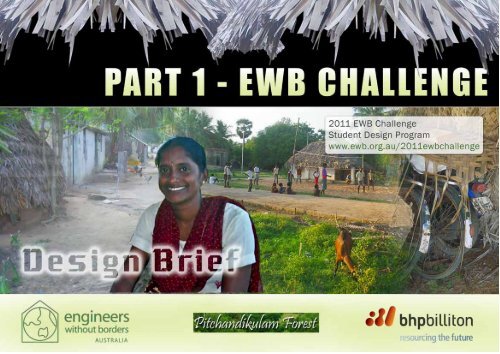
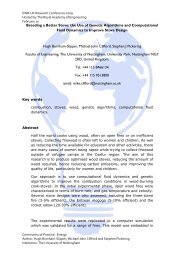
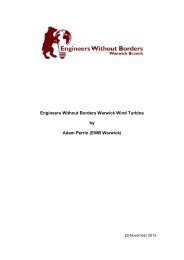
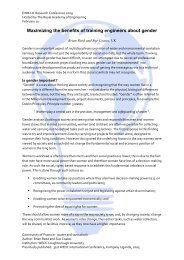
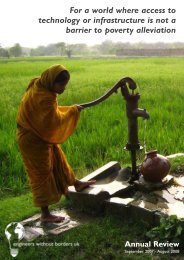
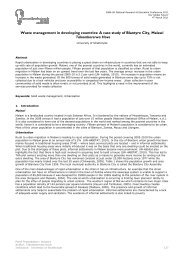
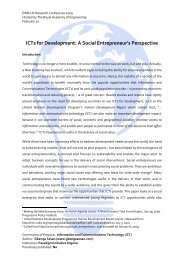
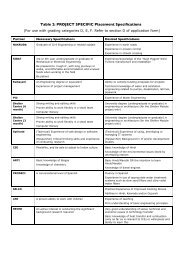

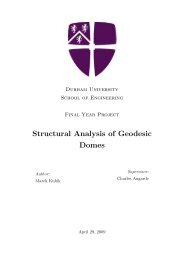
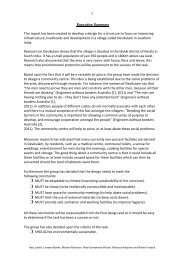
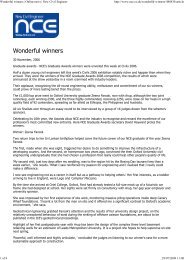
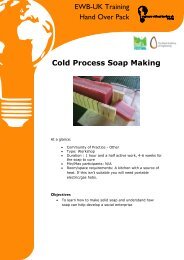
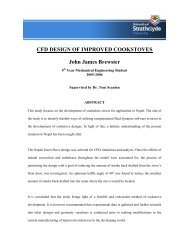
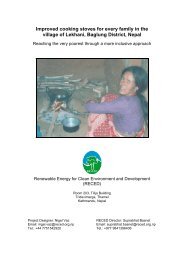
![Ethical Fundraising Guidance[1].pdf - Engineers Without Borders UK](https://img.yumpu.com/36288951/1/184x260/ethical-fundraising-guidance1pdf-engineers-without-borders-uk.jpg?quality=85)